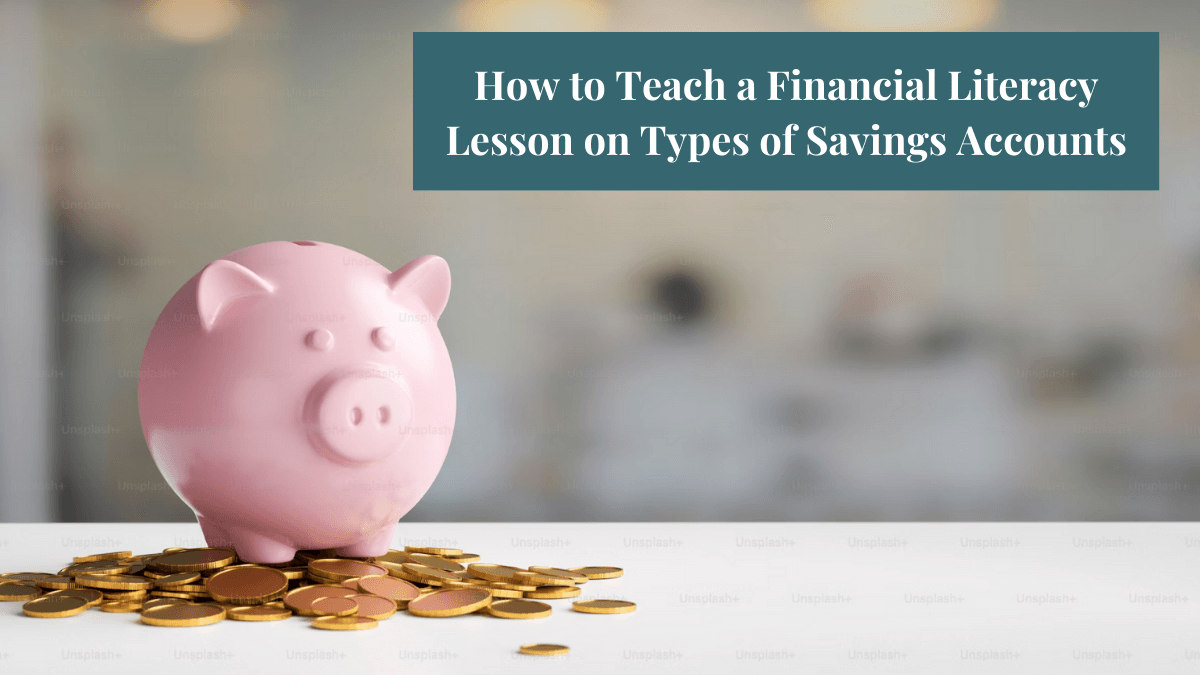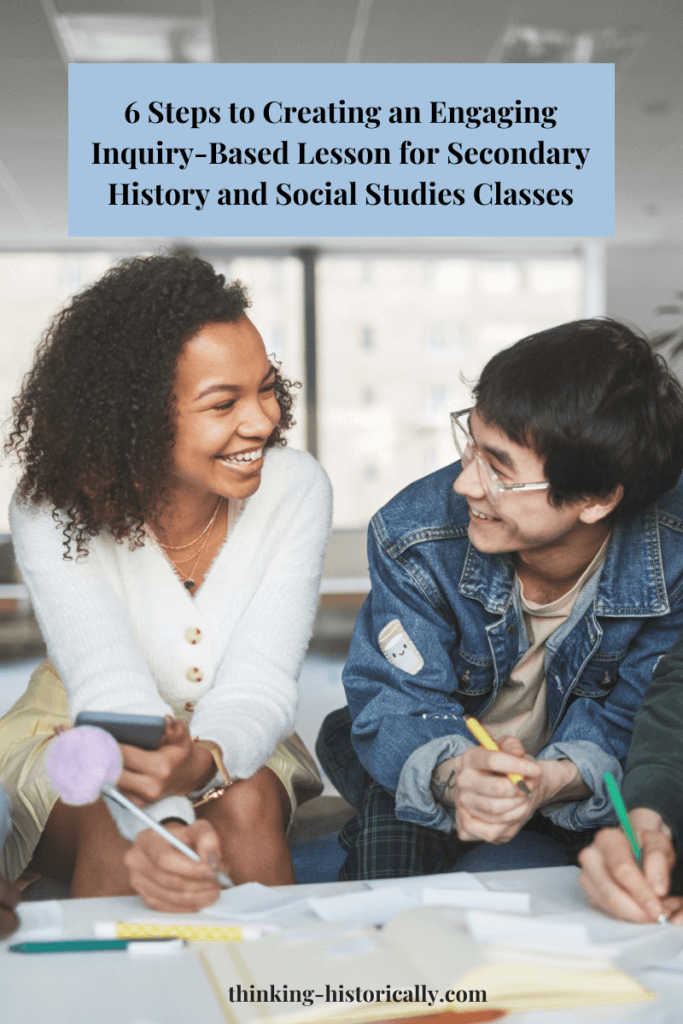Financial literacy is an important skill to have. Unfortunately, most of us don’t gain financial literacy skills until we’re much older and we’re trying to figure out how we can pay for our Netflix bill (lol). If you’re an economics teacher, the fantastic news is that you can incorporate a financial literacy lesson into your class curriculum!
Your students will love becoming financially literate because it is relevant to their lives. So you’re sure to get more buy-in from them to participate in class activities.

There are many financial topics that you can include into a financial literacy and personal finance curriculum. If you don’t know where to start, a fun lesson to create and teach your students is a lesson on the types of savings accounts that exist.
To be honest, I didn’t know that there was more than one type of savings account until I created this lesson for my students. Before this lesson, the only savings account that I knew of was the savings account I opened when I opened a checking account (lol). Your students might appreciate knowing about different types of savings accounts before they’re in their 30’s/40’s.
I’ll walk you through how to set up a financial literacy lesson on savings accounts so you can recreate it in your class. (If you’re interested in purchasing the savings accounts lesson that I created for my class, click here. This resource includes ready-to-use student hands and a complete lesson plan to make planning less stressful for you!)
Financial Literacy Buy-in!
First things first, you want to grab your students’ attention from the get go! To get my students excited about this financial literacy lesson, I gave them the following warm-up question:
- It is the end of the month and you’ve completed your monthly budget. You set aside money for each of your spending categories (food, personal, leisurely time, etc.) and have some money left over. Choose from the options below what you will do with the money you have left over after budgeting? Why?
This warm up question is a fun question to ask because it gets students talking about finances! Also, chances are that your students have been in this situation before and have wondered what to do with their extra money.
Give students about 2-3 minutes to write down their answers. Then call on a few students to share their responses with the whole class.
Next, go over the definition of interest. It is important for students to know the definition of interest and how it works so that they can be knowledgeable about savings accounts. For interest, I gave students the following definition:
- Interest is the percentage a financial institution pays you for keeping your money in an account with them. Interest also relates when you borrow money. It is the amount you pay when you borrow money
You can show students this video on interest.
6 Types of Savings Accounts
Next, I had students read about 6 different types of savings accounts. The article I gave students to read can be found at this link. While students read the article, I had them complete a graphic organizer like the one below.

You can have students complete this portion of the lesson individually or in pairs. I gave students about 15 minutes to complete this activity.
Once students are done, you can briefly go over the 6 types of savings accounts. Call on students to share out the definitions of each saving account.
Financial Literacy Lesson Scenarios!
Next, students will apply their understanding of the 6 types of saving accounts to 6 scenarios. For this activity, I created six personas. Students had to read each description and based on the description decide what type of savings account the person should open.
Below is an example of a persona I created:

You may have students work individually or in pairs to complete this activity. I gave students about 20 minutes to work on it. I think it is fun to have students work together because it gets them talking and collaborating with one another.
Finally, to end or wrap up the lesson, have students answer the following question:
- Think about your own financial goals. What type of savings account would be best for you to open? Why?
This is a great financial literacy lesson to use to introduce your students to finances. If you would like to purchase the complete lesson, click here!
Happy teaching!
———–
Older Posts
-
Second Industrial Revolution vs. Amazon: A Comparative Writing Activity for High School Students
The Second Industrial Revolution was a transformative era, marked by advanced technologies that reshaped how people lived and worked. This period saw a massive migration to cities, driven by the need to be closer to growing factories. In this blog, I’ll introduce you to my Second Industrial Revolution Writing Activity, designed to help students explore…
-
Boost Financial Smarts: Engaging Financial Literacy Lessons on Budgeting, Saving, and Credit
When I graduated from high school, I didn’t know the difference between a debit card and a credit card. It wasn’t until much after (a little too much after) I graduated from college and got a job that I started putting money aside for my retirement (oops lol). Financial literacy skills are so important, but…
-
Introduction to Political Philosophers Writing Activity
If you’re a high school government teacher you might be wondering how to kick start your semester. If this is you, a great place to start is with political philosophers because their ideas have shaped our modern political systems. In this blog post I’ll walk you through a Political Philosophers Writing Activity that I’ve used…
-
The Ultimate High School Economics Lessons Bundle to Kickstart Your Semester
High school economics is more than just graphs about supply and demand. Economics is all about the choices that we make and the outcomes of those choices. Economics can help students think more critically about the world around them. However, creating high school economics lessons that connect to students’ lives can be tricky. I know…
-
Make Economics Fun: 6 Engaging High School Economics Projects
High school economics can be a fun class to teach, but it can be difficult to make it an engaging course if you’re new to the teaching profession, you’re new to teaching economics, or you’re teaching multiple social studies subjects. I had a tough experience the first time I taught economics because I was also…
-
Fostering Future Entrepreneurs In Your Economics Class
According to a report by Global Entrepreneurship Monitor (GEM), 40% of young people between the ages of 18-34 years old want to start their own business or pursue entrepreneurial avenues. What is Global Entrepreneurship Monitor? It is an organization that collects data on entrepreneurs, business owners, experts, and policy makers. Their research has been used…



2 Responses